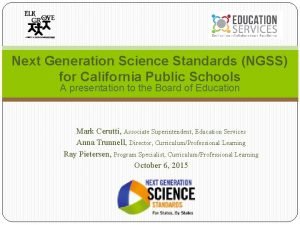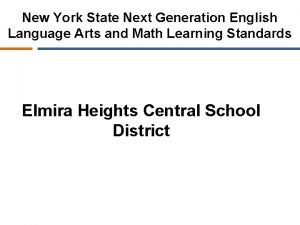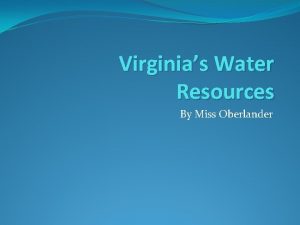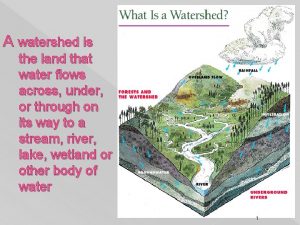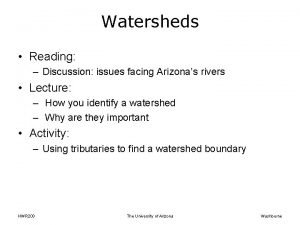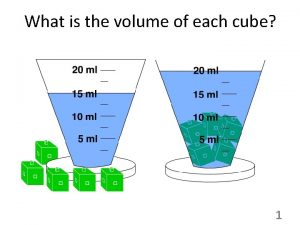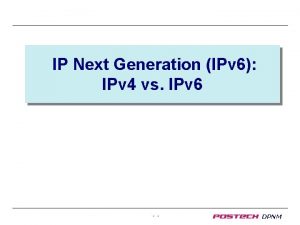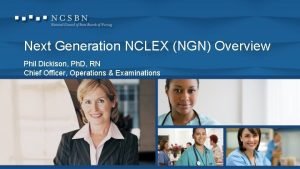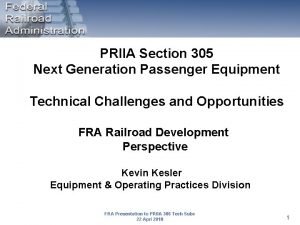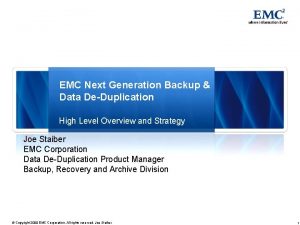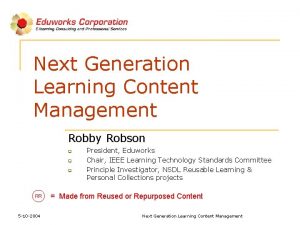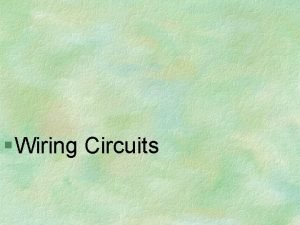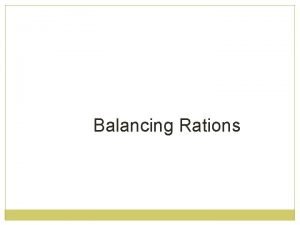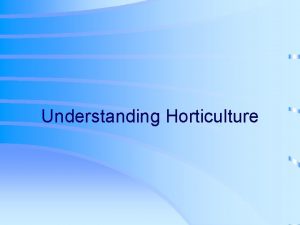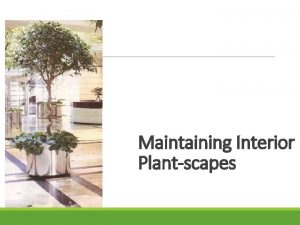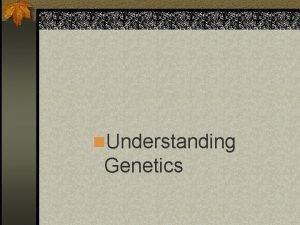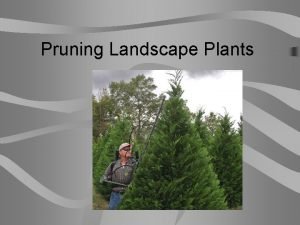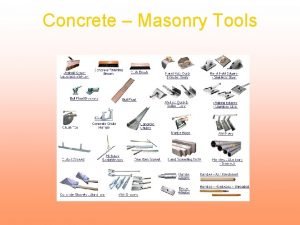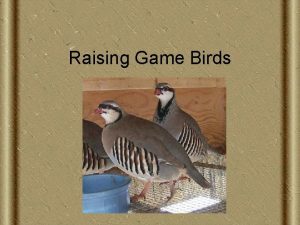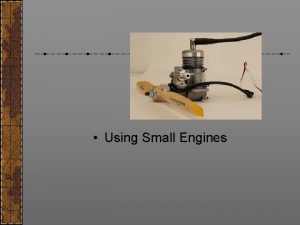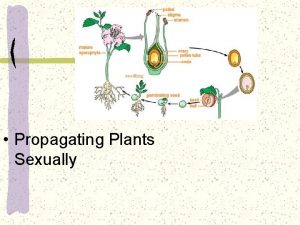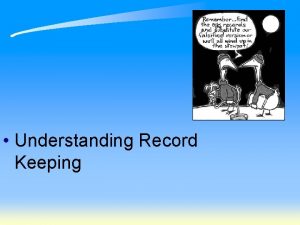Maintaining Watersheds Next Generation ScienceCommon Core Standards addressed




























- Slides: 28

Maintaining Watersheds

Next Generation Science/Common Core Standards addressed! • HS‐ESS 2‐ 5. Plan and conduct an investigation of the properties of water and its effects on Earth materials and surface processes. [Clarification Statement: Emphasis is on mechanical and chemical investigations with water and a variety of solid materials to provide the evidence for connections between the hydrologic cycle and system interactions commonly known as the rock cycle. Examples of mechanical investigations include stream transportation and deposition using a stream table, erosion using variations in soil moisture content, or frost wedging by the expansion of water as it freezes. Examples of chemical investigations include chemical weathering and recrystallization (by testing the solubility of different materials) or melt generation (by examining how water lowers the melting temperature of most solids).

Agriculture, Food, and Natural Resource Standards Addressed • NRS. 01. 04. Apply ecological concepts and principles to aquatic natural resource systems. • NRS. 01. 04. 01. a. Summarize the roles and properties of watersheds. • NRS. 01. 04. 01. b. Assess the function of watersheds and their effect on natural resources.

Bell Work /Learning Objectives ØDefine watershed. ØExplain the importance of watersheds. ØIdentify the features of a watershed. ØExplain how to manage a watershed.

Terms ØFilter strips ØRiparian areas ØTerrain ØWatershed divide ØWetland

Where does the water go that falls as precipitation? ØWhere does the water that falls on the school grounds go? ØHow does the water get there? ØWhat does the water carry with it?

Watershed ØAn area that provides runoff for a stream or reservoir ØAny natural or manmade part of the landscape can be considered a watershed. ØExamples include farmland, forests, fields, and parking lots.

Watersheds ØDrain downhill into bodies of water. ØIf water in the watershed becomes polluted, the body of water it drains into will be polluted as well. ØTherefore, watershed management is important to help keep pollution to a minimum. ØThis may include prohibiting activities such as disposing of wastes or building structures near watersheds.

Importance of Watersheds ØProvide people with a healthy water supply and places for recreation. ØUsed to provide water for irrigation and local industry. ØWildlife depend on watersheds for places to live and nest. ØPeople can live in watersheds.

Watershed Features ØInclude size, boundary, terrain, soil type, and the features nearest the water.

Watershed Size ØVaries by location. ØSome may be large, like those near rivers or estuaries. ØOther wetlands are smaller, like those near ponds and streams.

Watershed Boundaries ØMarked by watershed divides. ØA watershed divide is a ridge or area of higher ground that forces water to drain towards or away from a watershed.

Watershed Terrain ØRefers to the topography or the outline of the surface of the land. ØSteeper terrain will result in faster drainage. ØSoil erosion and flooding may result from faster drainage.

Watershed Soil Type ØCan also determine the rate of drainage in the watershed. ØSoils with high clay contents will drain more slowly which may result in more erosion and flooding. ØSoils with a high sand content will drain more quickly.

Watersheds ØAnother feature of a watershed are the features nearest the water. ØThe presence of filter strips, wildlife habitats, riparian areas, and wetlands can greatly affect the quality of the water in the watershed.

Filter Strips and Wildlife Habitats sediment and other pollutants. ØFilter strips are grassy areas along the edge of the watershed that filter out ØWildlife habitats include all plant and animal species that live within the watershed.

Wetlands Areas • Wetlands areas that have water covering the ground. Not only are wetlands excellent wildlife habitat but also serve a catch basin for runoff.

Riparian Areas • Riparian areas of vegetation near the source of water.

Watershed Planning and Management ØThere are several steps in planning and managing a watershed. ØFollowing these steps will help to determine the success of the development of the watershed. ØBefore a watershed can be managed it must first be planned for and developed.

Watershed Planning ØDetermine the size and boundaries of the watershed. ØThese will be determined by the soil and terrain of the area. ØDetermine the uses of the watershed. ØThis should include people and industry that will use the watershed and what they will use it for.

Watershed Planning ØBuild partnerships with local people and businesses. ØThey can help to find funding, divide work, and manage conflicts. ØDevelop maps of the area, determine the goals of the area, and evaluate the quality of the water in the potential watershed.

Watershed Planning ØEducate the local communities. ØEducational programs can help make people aware of the uses of the watershed, how to care for and protect the watershed, and the benefits of developing the watershed. ØProvide landowners in the area with technical and financial assistance in developing and maintaining the watershed.

Watershed Planning ØThe final step is to follow‐up the project. ØMake sure that water quality monitoring is continued and the area is being managed appropriately. ØAlso, continued education is important.

Watershed Management ØOnce a watershed has been planned and developed, it has to be managed. ØMake decisions about the watershed with the support of everyone involved. ØThis should include the local partners and local community members.

Watershed Management ØObtain technical information about the watershed using high quality tests done in a precise manner. ØUse this information when making plans for the watershed.

Watershed Management ØDevelop education and assistance programs. ØKeeping the local community educated about the watershed will make management simpler. ØKeeping pollution and degradation to a minimum will be more cost effective than not.

Review / Summary ØDefine watershed. ØExplain the importance of watersheds. ØIdentify the features of a watershed. ØExplain how to manage a watershed.

The End!
 X.next = x.next.next
X.next = x.next.next Nys next generation math standards
Nys next generation math standards Next gen math standards
Next gen math standards Ngss california
Ngss california Next generation personal finance standards
Next generation personal finance standards Nys ela standards next generation
Nys ela standards next generation Financial literacy grade 9
Financial literacy grade 9 What are the three major watersheds in virginia
What are the three major watersheds in virginia What are the three major watersheds in virginia
What are the three major watersheds in virginia What separates watersheds
What separates watersheds Which island is the oldest
Which island is the oldest Dam construction in digital image processing
Dam construction in digital image processing First generation antipsychotics
First generation antipsychotics God you are good and your mercy endureth forever
God you are good and your mercy endureth forever Ip next generation
Ip next generation Yang bukan arsitektur fungsi softswitch adalah
Yang bukan arsitektur fungsi softswitch adalah Vendor selection matrix
Vendor selection matrix Next g network
Next g network Next gen eu
Next gen eu Next generation sequencing methods
Next generation sequencing methods Next generation enterprise network
Next generation enterprise network Next generation nclex 2019
Next generation nclex 2019 Priia 305
Priia 305 Next generation soc
Next generation soc Next generation radiology
Next generation radiology Next generation sequencing methods
Next generation sequencing methods Next generation backup
Next generation backup Robson management corporation
Robson management corporation Next generation learning platform
Next generation learning platform



